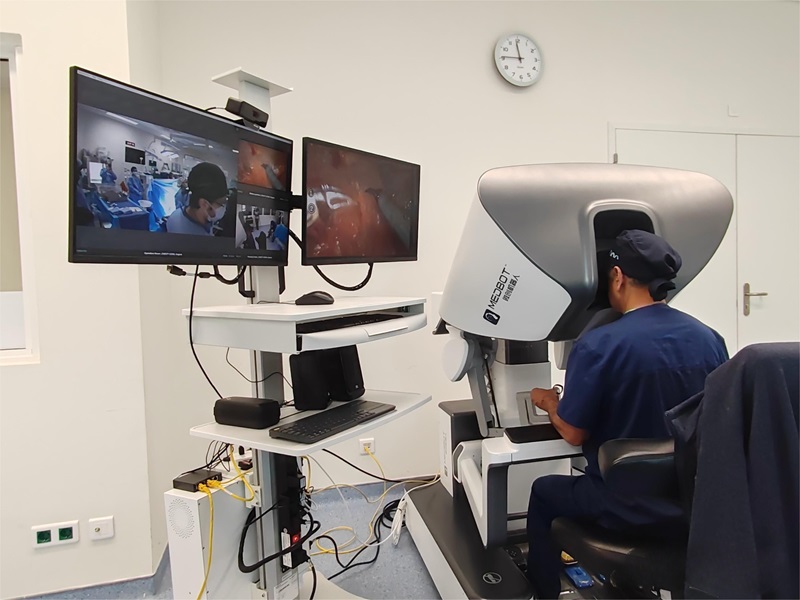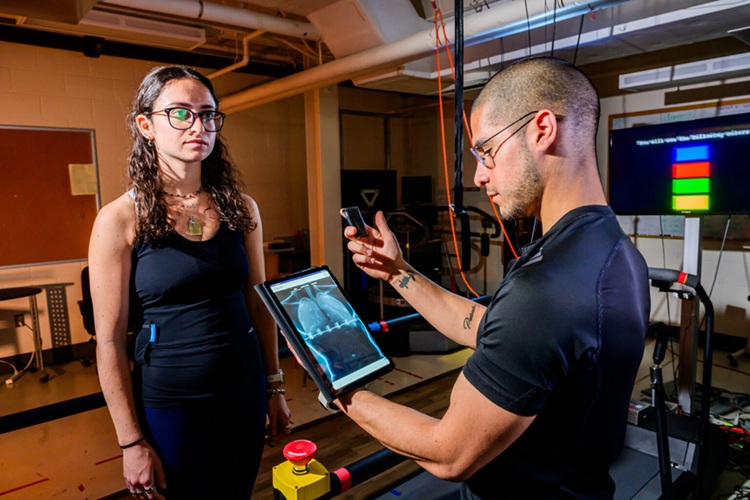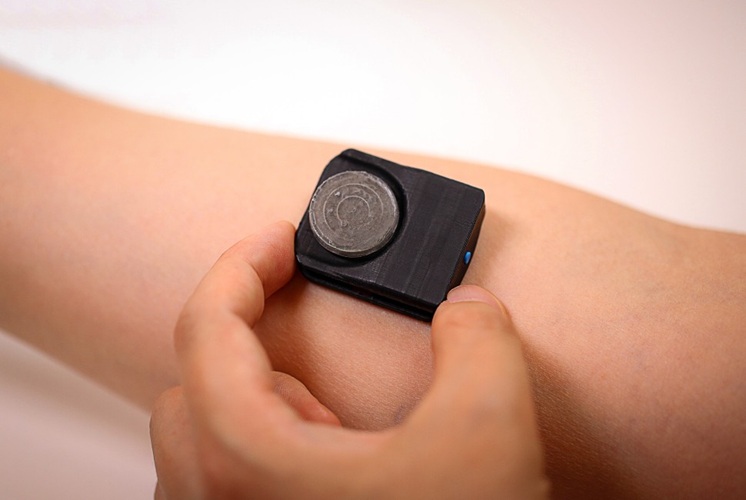Surgical Robot System with Telesurgery Capability to Revolutionize Healthcare Delivery
|
By HospiMedica International staff writers Posted on 02 Dec 2024 |

Robotic telesurgery, or remote surgery, is a technique where a surgeon operates on a patient from a distance using a robot and telecommunication networks. This approach allows surgeons to conduct procedures remotely by utilizing high-speed data transmission and real-time communication. Telesurgery plays a vital role in delivering specialized surgical care to underserved or remote regions, helping bridge the gap in healthcare access. By enabling expert surgeons to perform complex surgeries from afar, it enhances the availability of medical services and ensures that patients in distant locations receive high-quality care. This groundbreaking method has the potential to reduce healthcare disparities and improve patient outcomes globally. Now, a telesurgery-enabled robotic system is advancing surgical procedures, improving patient outcomes, and increasing operational efficiency across various medical fields.
Designed with both surgeons and patients in mind, the Toumai surgical robot system from MicroPort Medbot (Shanghai, China) incorporates advanced robotics, high-definition 3D imaging, and user-friendly control interfaces, providing surgeons with unmatched precision and control during operations. A key feature of the Toumai system is its telesurgery capability, which could revolutionize the future of healthcare. The system consists of a surgeon console, a patient cart, and an image vehicle, enabling surgeons to operate from outside the sterile environment of the surgical area, thus minimizing their physical strain. By harnessing robotic technology, Toumai offers numerous benefits, including less invasive procedures, greater precision, improved stability, and enhanced safety.
To date, the Toumai system has successfully conducted over 200 robotic telesurgery procedures globally. Recently, the system was used to perform the sixth robot-assisted laparoscopic radical prostatectomy in the Republic of Angola. In a groundbreaking achievement for Sub-Saharan Africa, two of these surgeries were carried out remotely using the telesurgery feature of the Toumai system. For these procedures, the master and remote consoles were located in separate hospital sites, with the connection between them maintained through Toumai’s telesurgery console and the hospitals' internal telecom networks. The latency time between the master and remote systems was under six milliseconds. The Toumai system is currently approved for use in various medical fields, including urology, thoracic, general surgery, gynecology, thyroid and breast surgeries, and pediatric surgery. It is approved and commercially available in China, the European Union, and other countries that recognize NMPA and CE Mark certifications.
"We are proud to participate in these landmark robot telesurgery cases to bring the ToumaiTM system to this region of the world," said Dr. He Chao, Founder and President of MicroPort® MedBotTM, "In time, we will look back on this date and this achievement and recognize that this was the foundational event for how the delivery of healthcare was revolutionized in Angola with ToumaiTM and the promise of telesurgery."
Related Links:
MicroPort Medbot
Latest Surgical Techniques News
- Intravascular Imaging for Guiding Stent Implantation Ensures Safer Stenting Procedures
- World's First AI Surgical Guidance Platform Allows Surgeons to Measure Success in Real-Time
- AI-Generated Synthetic Scarred Hearts Aid Atrial Fibrillation Treatment
- New Class of Bioadhesives to Connect Human Tissues to Long-Term Medical Implants
- New Transcatheter Valve Found Safe and Effective for Treating Aortic Regurgitation
- Minimally Invasive Valve Repair Reduces Hospitalizations in Severe Tricuspid Regurgitation Patients
- Tiny Robotic Tools Powered by Magnetic Fields to Enable Minimally Invasive Brain Surgery
- Magnetic Tweezers Make Robotic Surgery Safer and More Precise
- AI-Powered Surgical Planning Tool Improves Pre-Op Planning
- Novel Sensing System Restores Missing Sense of Touch in Minimally Invasive Surgery
- Headset-Based AR Navigation System Improves EVD Placement
- Higher Electrode Density Improves Epilepsy Surgery by Pinpointing Where Seizures Begin
- Open-Source Tool Optimizes Placement of Visual Brain Implants
- Easy-To-Apply Gel Could Prevent Formation of Post-Surgical Abdominal Adhesions
- Groundbreaking Leadless Pacemaker to Prevent Invasive Surgeries for Children
- Spectroscopy Technique Improves Surgery for Pediatric Epilepsy Patients
Channels
Critical Care
view channel
Novel Intrabronchial Method Delivers Cell Therapies in Critically Ill Patients on External Lung Support
Until now, administering cell therapies to patients on extracorporeal membrane oxygenation (ECMO)—a life-support system typically used for severe lung failure—has been nearly impossible.... Read more
Generative AI Technology Detects Heart Disease Earlier Than Conventional Methods
Detecting heart dysfunction early using cost-effective and widely accessible tools like electrocardiograms (ECGs) and efficiently directing the right patients for more expensive imaging tests remains a... Read more
Wearable Technology Predicts Cardiovascular Risk by Continuously Monitoring Heart Rate Recovery
The heart's response to physical activity is a vital early indicator of changes in health, particularly in cardiovascular function and mortality. Extensive research has demonstrated a connection between... Read more
Wearable Health Monitoring Device Measures Gases Emitted from and Absorbed by Skin
The skin plays a vital role in protecting our body from external elements. A key component of this protective function is the skin barrier, which consists of tightly woven proteins and fats that help retain... Read morePatient Care
view channel
Portable Biosensor Platform to Reduce Hospital-Acquired Infections
Approximately 4 million patients in the European Union acquire healthcare-associated infections (HAIs) or nosocomial infections each year, with around 37,000 deaths directly resulting from these infections,... Read moreFirst-Of-Its-Kind Portable Germicidal Light Technology Disinfects High-Touch Clinical Surfaces in Seconds
Reducing healthcare-acquired infections (HAIs) remains a pressing issue within global healthcare systems. In the United States alone, 1.7 million patients contract HAIs annually, leading to approximately... Read more
Surgical Capacity Optimization Solution Helps Hospitals Boost OR Utilization
An innovative solution has the capability to transform surgical capacity utilization by targeting the root cause of surgical block time inefficiencies. Fujitsu Limited’s (Tokyo, Japan) Surgical Capacity... Read more
Game-Changing Innovation in Surgical Instrument Sterilization Significantly Improves OR Throughput
A groundbreaking innovation enables hospitals to significantly improve instrument processing time and throughput in operating rooms (ORs) and sterile processing departments. Turbett Surgical, Inc.... Read moreHealth IT
view channel
Printable Molecule-Selective Nanoparticles Enable Mass Production of Wearable Biosensors
The future of medicine is likely to focus on the personalization of healthcare—understanding exactly what an individual requires and delivering the appropriate combination of nutrients, metabolites, and... Read more
Smartwatches Could Detect Congestive Heart Failure
Diagnosing congestive heart failure (CHF) typically requires expensive and time-consuming imaging techniques like echocardiography, also known as cardiac ultrasound. Previously, detecting CHF by analyzing... Read moreBusiness
view channel
Expanded Collaboration to Transform OR Technology Through AI and Automation
The expansion of an existing collaboration between three leading companies aims to develop artificial intelligence (AI)-driven solutions for smart operating rooms with sophisticated monitoring and automation.... Read more















